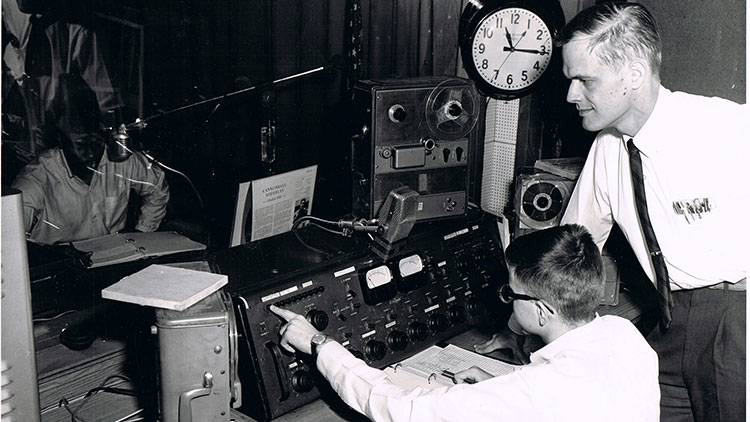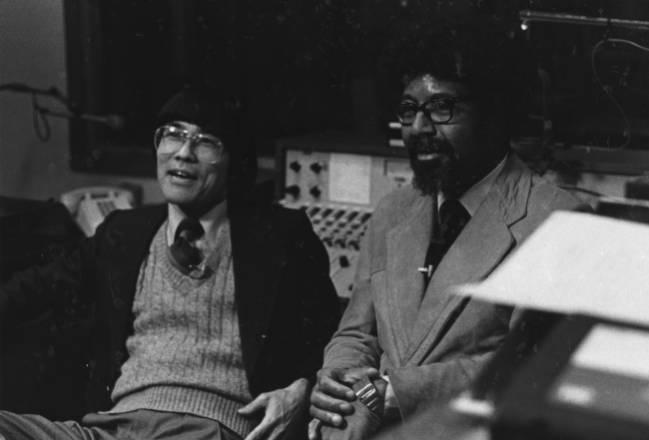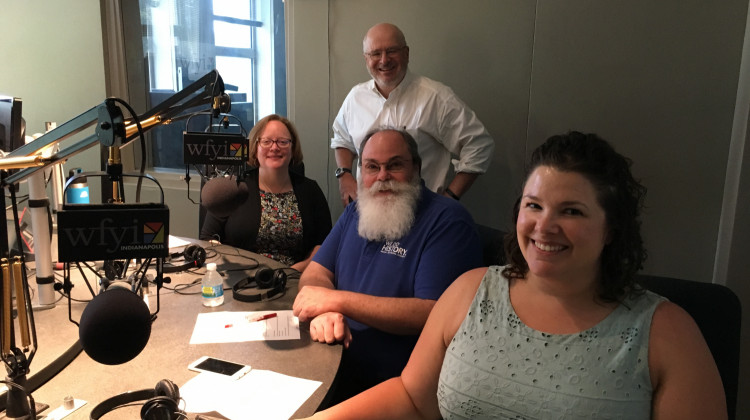WFYI-FM first aired as WIAN on November 1, 1954, through the efforts of and its PTA. It became the first noncommercial, educational radio station in Indianapolis to qualify for federal funds from the Corporation for Public Broadcasting (CPB), and the city’s first affiliate of National Public Radio (NPR).

Initially, students and a faculty member operated the station with a low-power transmitter and an antenna on top of the school. It, therefore, broadcast only to the blocks surrounding Shortridge. From its inception through the 1960s, Shortridge students staffed the studio and served as on-the-air announcers.
The , which owned and operated it, however, created the station with the intent of producing educational programming to benefit all of the system’s schools, not only Shortridge, by piping instructional programming into their classrooms. By providing educational shows about history, music, and other subjects throughout the school day, the station became an important part of the IPS curriculum.
In September 1963, WIAN began a regular schedule of student broadcasts every Friday evening during the school year. These programs featured live coverage of high school football and basketball games and taped broadcasts of concerts by IPS high school music groups. By the mid-1960s the WIAN sports staff included representatives from all IPS high schools.
By 1969, IPS decided to build a new studio for WIAN and to create studios for closed-circuit television. As was true with the radio station, IPS intended to use closed-circuit television for instructional student programming and also for in-service instruction for IPS faculty and staff. With the move to the new Center for Instructional Radio and Television at 931 Fletcher Avenue in 1970, the Shortridge era ended. The broadcasting power of the radio station also increased to 10,000 watts.

At the same time, station manager Arthur R. Van Allen became interested in joining the newly formed National Public Radio Network, but he had to find a way to expand the station’s capacity to qualify. The opportunity came with the , formed by and others following the sale to the Indianapolis Radio Corporation in 1967 (see ). WAIV had been the local commercial classical music radio station. Left without a venue for classical music programming, the Fine Arts Society partnered with WIAN for a nearly daily evening classical music broadcast called the Second Programme in 1970. With this partnership in place and other expansions in programming for a general audience, Van Allen pursued a grant through the Corporation for Public Broadcasting. WIAN was awarded the grant the same day that NPR began operation on April 1, 1970, and started airing NPR programs on September 1, 1971.
In the early 1970s, WIAN’s schedule consisted of some local news and sports, classical music, jazz, folk music, and drama, in addition to NPR news and cultural programming. Noteworthy local WIAN public affairs radio productions included La Voz Latina, the first Spanish language radio show in Indiana (see ), and The Afro-American in Indiana, hosted by Father and Sister Jane Edward.
Listenership to WIAN’s educational programs for IPS, however, gradually declined during the 1970s because of the closed-circuit delivery of instructional television to the school system’s classrooms. Consequently, in 1979 the station dropped instructional programs from its schedule and adopted a new emphasis on full-service public radio programming. Increased funds from the Corporation for Public Broadcasting allowed further development of the staff and programs emphasizing news and public affairs, classical music, and jazz. In September 1986, WIAN became the first radio station to produce programs distributed nationally via satellite from Indianapolis with broadcasts of the .
During the 1980s WIAN had considerable success in gaining financial and volunteer support from its listeners. However, concern about the financial resources of the Indianapolis Public Schools caused the administration and the school board to question the appropriateness of a school system’s operation of a professionally staffed public radio station. As a result, IPS sold the station to Indianapolis Public Broadcasting, owners of , on December 1, 1986. The call letters were subsequently changed to WFYI-FM.

Today, WFYI Public Media includes 90.1, online digital radio streaming, three television channels, and broad digital distribution. More than 80 professionals work at WFYI Public Media to make it Indiana’s chief NPR and PBS member station and one of Central Indiana’s leading not-for-profits. The WFYI headquarters is a state-of-the-art facility conveniently situated at 1630 N. Meridian Street. in Indianapolis. The WFYI location is one of Indianapolis’ premier media hubs and centers for non-commercial media.
WFYI is honored to serve as the flagship PBS and NPR member station for Indiana Public Broadcasting Stations Inc. (IPBS). Approximately 1.6 million households throughout Central Indiana continue to tune in to WFYI Public Television, WFYI 90.1 Public Radio, and visit wfyi.org, and connect with the station on social media.
WFYI Public Media continues to focus on expanding its local production capacity; enhancing its community services to both mainstream and underserved audiences; and building on its proven track record of delivering first-rate local, national, and international news coverage.
A New Radio Experience
With the advent of digital radio broadcasting, WFYI Public Radio features two distinct digital services:
WFYI 90.1 FM HD1 Home to WFYI Public Radio’s traditional NPR and BBC programming, along with 90.1 FM’s award-winning local news and public affairs shows. WFYI 90.1 Public Radio is also available streaming at wfyi.org.
WFYI 90.1 FM HD2 (also known as “The Point”) This alternative service features the same thought-provoking programming that local public radio fans have grown accustomed but with a trendier and more engaging media format that is not just available through HD radio technology but also live-streamed online through WFYI’s website, wfyi.org.

Help improve this entry
Contribute information, offer corrections, suggest images.
You can also recommend new entries related to this topic.